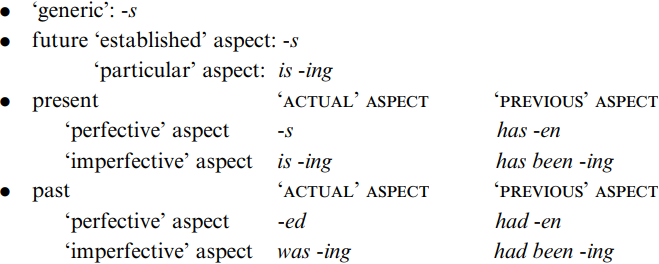


 Grammar
Grammar
 Tenses
Tenses
 Present
Present
 Past
Past
 Future
Future
 Parts Of Speech
Parts Of Speech
 Nouns
Nouns
 Verbs
Verbs
 Adverbs
Adverbs
 Adjectives
Adjectives
 Pronouns
Pronouns
 Pre Position
Pre Position
 Preposition by function
Preposition by function 
 Preposition by construction
Preposition by construction
 Conjunctions
Conjunctions
 Interjections
Interjections
 Grammar Rules
Grammar Rules
 Linguistics
Linguistics
 Semantics
Semantics
 Pragmatics
Pragmatics
 Reading Comprehension
Reading Comprehension|
Read More
Date: 2023-11-28
Date: 2024-01-01
Date: 2024-08-22
|
The first distinctions are:

Imperative mood, employed in giving orders, uses the base form of the verb. The subject is generally 2nd person; it can then be (and usually is) omitted. In addition, the imperative generally has a distinctively loud and abrupt voice quality.
Statements and questions share the same reality status, modality, tense, and aspect categories and can be referred to as non-imperative mood. Questions are distinguished by a rising final intonation and usually also by word order rearrangement (and inclusion of do if there is no auxiliary or copula).

The major distinction within non-imperative is between:
. realis status—something which has reality in past, present or future time (or, with negation added, which does not have reality);
. irrealis status—something which is uncertain in the future, or was unrealized in the past.

Irrealis status is marked by modals or semi-modals. The nine main choices, include prediction (will and is going to), ability (can and is able to) and necessity (must and has (got) to). Irrealis also accepts the same aspectual distinctions as present tense— perfective/imperfective and actual/previous.
Within realis, there are four tense choices, all but generic with further aspect parameters; the realization is given for each, for 3rd person singular masculine, feminine or neuter subject.

It will be seen that the -s suffix marks three distinct tense-aspect specifications:
—generic
—established future
—actual perfective present
And is -ing is used for two:
—particular future
—actual imperfective present
We now discuss, in turn, generic, then future, then the present and past systems.
|
|
|
|
علامات بسيطة في جسدك قد تنذر بمرض "قاتل"
|
|
|
|
|
|
|
أول صور ثلاثية الأبعاد للغدة الزعترية البشرية
|
|
|
|
|
|
|
مكتبة أمّ البنين النسويّة تصدر العدد 212 من مجلّة رياض الزهراء (عليها السلام)
|
|
|